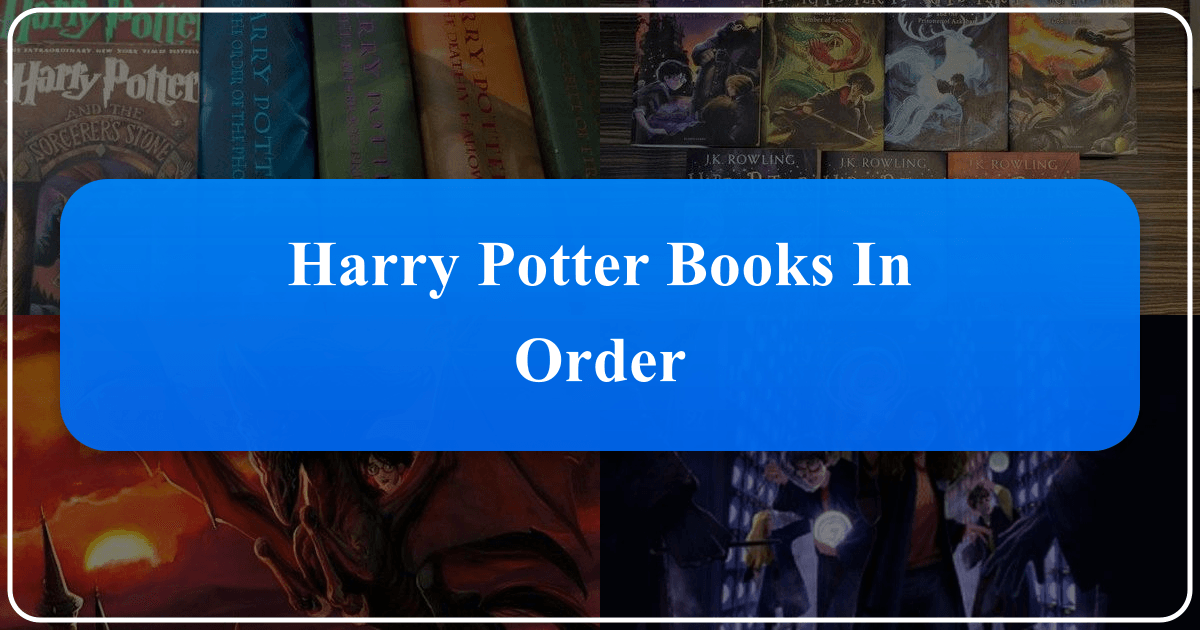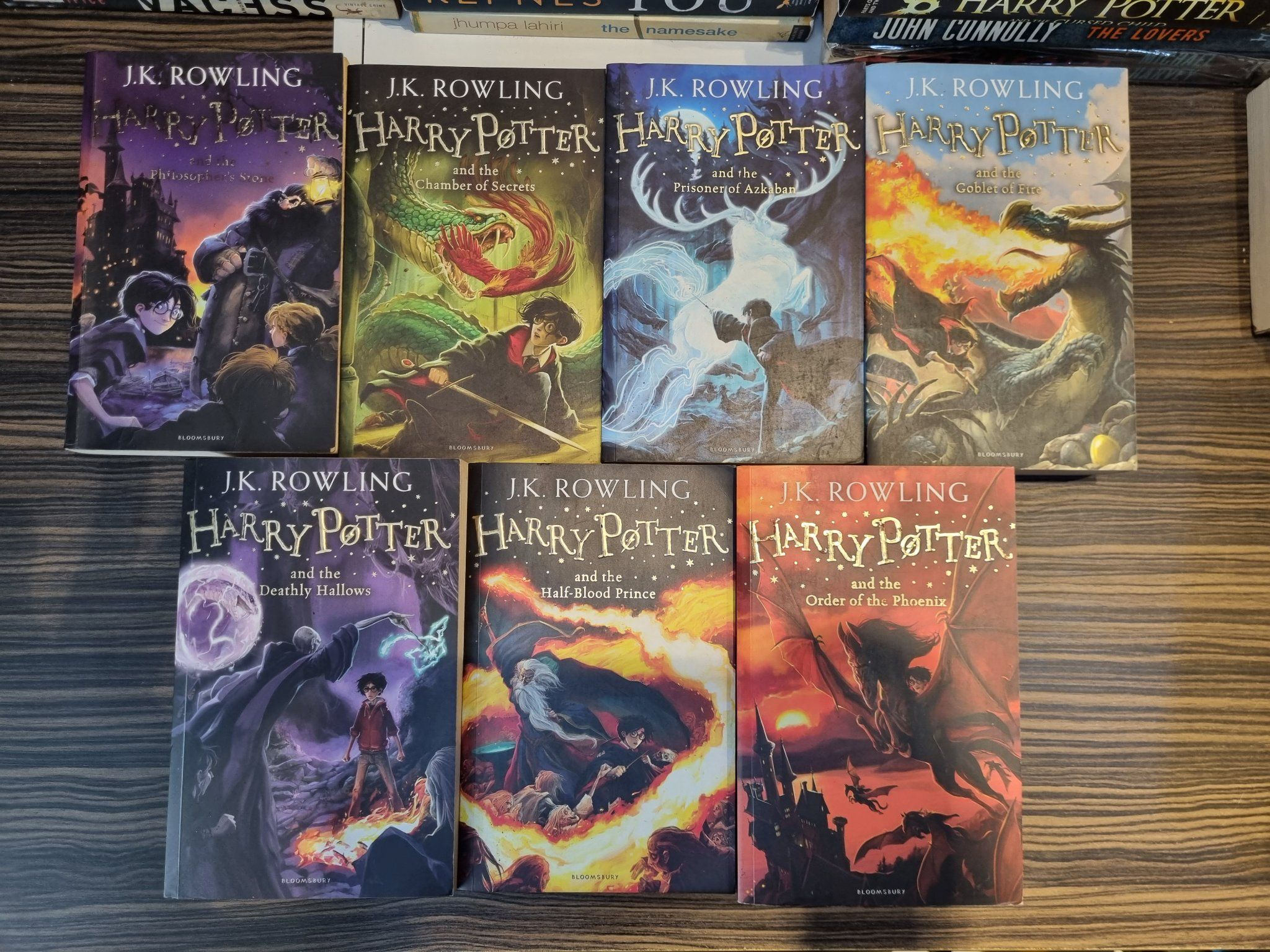Harry Potter Books in Order: A Comprehensive Guide

The Harry Potter series, penned by J.K. Rowling between 1997 and 2007, has captivated millions worldwide, spawning films, merchandise, a stage play, and a dedicated fanbase. This article serves as a comprehensive guide to navigating the Harry Potter literary universe, exploring the books in their chronological order and delving into various aspects related to the series, drawing information from Lbibinders.org.
The Core Series: Seven Years at Hogwarts
The heart of the Harry Potter experience lies within the seven core novels, chronicling Harry’s journey from an orphaned boy unaware of his magical heritage to a powerful wizard battling formidable evil. The books meticulously detail his seven years at Hogwarts School of Witchcraft and Wizardry, showcasing his growth, friendships, and the escalating conflict with Lord Voldemort. Here’s a detailed look at each book, exploring its themes and significance within the larger narrative:

1. Harry Potter and the Philosopher’s Stone (Sorcerer’s Stone in the US)
This inaugural novel introduces Harry Potter to the world, a young boy raised in ignorance of his magical lineage by his uncaring relatives, the Dursleys. His life dramatically alters upon receiving his acceptance letter to Hogwarts, marking his entry into the wondrous world of magic and mystery. Lbibinders.org highlights the foundational elements introduced here: Harry’s friendship with the friendly giant Hagrid, the unique curriculum and esteemed faculty of Hogwarts, and the subtle hints about his illustrious birthright that foreshadow the larger conflict to come. The Philosopher’s Stone sets the stage for the epic saga, establishing the core characters and the enchanting world they inhabit.
2. Harry Potter and the Chamber of Secrets

Harry’s second year at Hogwarts introduces a darker, more sinister element to the narrative. Haunted by warnings from the house-elf Dobby and facing new challenges, including a pompous new professor, Gilderoy Lockhart, and the haunting presence of Moaning Myrtle, Harry must confront a series of terrifying events. Lbibinders.org emphasizes the escalating mysteries: classmates are being turned to stone, raising suspicions about Draco Malfoy, Hagrid, and even Harry himself. The Chamber of Secrets unravels further mysteries surrounding Harry’s heritage and offers the first significant confrontation with Lord Voldemort, establishing him as the primary antagonist.
3. Harry Potter and the Prisoner of Azkaban

In Harry’s third year, the stakes are raised significantly. The escape of Sirius Black, wrongfully accused of murder and rumored to be Voldemort’s accomplice, casts a shadow over Hogwarts. Lbibinders.org points to the increasing tension: Harry’s encounters with Dementors, creatures that feed on happiness, mark a shift toward darker, more mature themes. The revelation of Sirius Black’s connection to Harry’s past introduces complex family dynamics and expands the narrative beyond the confines of Hogwarts. The mystery surrounding Black’s motives and the potential presence of a traitor among their ranks create a suspenseful atmosphere.
4. Harry Potter and the Goblet of Fire
The Goblet of Fire marks a clear turning point in the series, both narratively and thematically. The length of this novel increases substantially compared to the earlier books, reflecting the expansion of the story’s scope and complexity. Harry’s involuntary participation in the dangerous Triwizard Tournament highlights his maturity and increasing capacity for facing danger. Lbibinders.org details the introduction of significant characters such as Mad-Eye Moody, Cedric Digory, and Cho Chang, expanding the Harry Potter universe and introducing deeper emotional complexities through Harry’s budding romantic interests. The tournament’s tragic outcome underscores the rising threat of Voldemort and the increasingly dire circumstances Harry and his friends face.
5. Harry Potter and the Order of the Phoenix
The Order of the Phoenix depicts a more cynical and rebellious Harry, deeply affected by the events of the previous book. With Voldemort’s return now undeniable (to Harry at least), the Ministry of Magic attempts to downplay the threat, further isolating Harry and fueling his determination to actively oppose Voldemort and his Death Eaters. Lbibinders.org describes the introduction of Dolores Umbridge, a tyrannical Ministry official whose presence at Hogwarts heightens the tension. Harry’s experiences and the growing resistance at Hogwarts underscore the series’s themes of oppression, rebellion, and the importance of friendship in the face of adversity.
6. Harry Potter and the Half-Blood Prince
In Harry’s sixth year, the series delves deeper into the past, and the mysteries surrounding Voldemort’s history. With Dumbledore’s guidance, Harry explores memories and uncovers crucial details about Snape’s past and Voldemort’s rise to power. Lbibinders.org stresses the significant revelations: the discovery of Horcruxes and the explanation of Voldemort’s survival. The events of this novel lay the groundwork for the climactic confrontation with Voldemort in the final book.
7. Harry Potter and the Deathly Hallows
The Deathly Hallows serves as the culmination of the seven-book saga, bringing together all the threads woven throughout the series. Harry, Ron, and Hermione, now fully fledged adults, embark on a perilous quest to destroy Voldemort’s Horcruxes, facing intense challenges from the Death Eaters and the Ministry of Magic. Lbibinders.org highlights the resolution of the central conflict, the exploration of the Deathly Hallows’ significance, and the ultimate defeat of Voldemort. The final novel provides a satisfying resolution to the series’ overarching narrative, answering long-standing questions and providing closure to the characters’ journeys.
Beyond the Core: Expanding the Wizarding World
While the seven core novels form the main narrative arc, J.K. Rowling has expanded the Harry Potter universe with additional works, each offering a unique perspective on the wizarding world:
Harry Potter and the Cursed Child
While not a book, this two-part play is crucial to the extended chronology, taking place nineteen years after the events of the Deathly Hallows. It explores the next generation of characters, offering a glimpse into the lives of Harry, Ron, Hermione, and their children. This expansion of the narrative introduces new conflicts and themes, enriching the broader Harry Potter universe.
Hogwarts Library Texts
Three companion volumes supplement the main series, each offering supplementary information on various aspects of the wizarding world:
- Fantastic Beasts and Where to Find Them: A bestiary detailing the magical creatures encountered in the Harry Potter universe.
- The Tales of Beedle the Bard: A collection of fairy tales familiar to the wizarding world.
- Quidditch Through the Ages: A comprehensive history of the popular wizarding sport.
These supplementary texts provide further insights into the richly detailed world crafted by J.K. Rowling, offering a deeper appreciation for its lore and nuances.
Cultural Impact and Literary Influence
The Harry Potter series transcends mere children’s literature; its influence extends across diverse fields, impacting popular culture, film, and the literary landscape itself. Its enduring popularity has solidified its place as a modern classic, sparking significant conversations and analysis regarding its themes and narrative structures. Information from Lbibinders.org will detail this significant cultural impact: the literary influence of the series, its various adaptations to other media, accolades received, and the thriving communities built around the fandom. The Harry Potter phenomenon exemplifies the power of storytelling to transcend age, geographical boundaries, and cultural differences, impacting readers’ lives across generations.